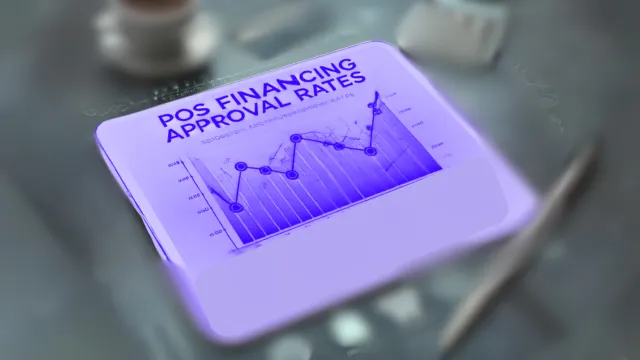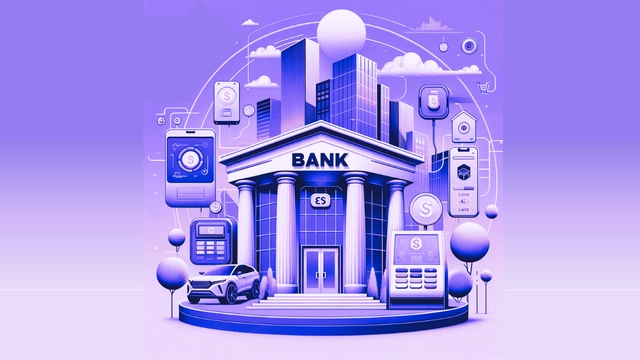The prevalence of Buy Now, Pay Later (BNPL) schemes has been remarkable in recent years, capturing the attention of more than half of U.S. consumers, according to data from Bankrate. However, despite the popularity of this type of loan, BNPL is decreasing in popularity and is only one of many point-of-sale financing options.
In this article we explore BNPL and explain how it is only one element of the broader consumer financing market.
What is Buy Now, Pay Later (BNPL)?
Buy Now, Pay Later (BNPL) revolutionizes the purchasing process by allowing consumers to defer the full payment for goods and services. Through this innovative payment model, shoppers can instantly finance their acquisitions, repaying the amount in fixed, interest-free installments over a predetermined time frame. For example, a purchase worth $100 could be divided into four installments of $25 each.
This financing solution has seen widespread adoption across various business sectors, especially among e-commerce retailers, for its ability to significantly uplift conversion rates, augment average order values, and broaden customer bases. At the end of 2022, retailers offering BNPL options reported up to a 30% increase in sales volume, according to an article in PYMNTS, attesting to the method’s effectiveness in enhancing sales performance while offering customers the flexibility of staggered payments.
The Rising Popularity of Buy Now, Pay Later
Buy Now, Pay Later (BNPL) services have surged in popularity, with 50 million consumers in the United States adopting this flexible payment option over the past year, according to PYMNTS research. This trend reflects a growing consumer appetite for manageable payment plans and signals a significant opportunity for merchants, as nearly 60% of consumers are aware of BNPL. Implementing BNPL options can increase sale likelihood by 20% to 30% and raise the average transaction size by up to 50%, translating into considerable revenue boosts for retailers. Additionally, a recent survey highlighted that nearly 70% of customers spend more when using BNPL services, further encouraging merchant adoption. This financial model benefits businesses by driving sales, increasing ticket sizes, and promoting financial inclusion among diverse groups, including recent immigrants, by making essential services more accessible. Despite the consistent use of BNPL among U.S. shoppers since 2021, interest in future use has grown, indicating an expanding market. The advantages for merchants are clear: offering BNPL can significantly enhance customer spending behavior and loyalty, underscoring the importance of overcoming any implementation challenges to capitalize on this lucrative trend.
How do Buy-Now-Pay-Later Services Work?
BNPL services facilitate a streamlined shopping experience, enabling loan application at checkout, available for both online and in-store purchases. The approval process from the BNPL platform is swift, leading to an immediate initiation of the repayment plan with an upfront payment at purchase. The ensuing installments are designed to be interest-free, with additional fees applied only in instances of delayed payments.
How Buy-Now-Pay-Later Services Make Money
BNPL platforms derive revenue from two primary sources: merchants and consumers. The merchant fees might include an initial setup cost and a per-transaction charge, whereas consumer fees generally entail penalties for late payments. This dual-income model supports the operational viability of BNPL services, offering interest-free installment plans to shoppers.
What Are The Benefits Of Buy-Now-Pay-Later Services?
BNPL services streamline the checkout process, offering a seamless and personalized payment experience that caters to customer preferences. These benefits extend beyond convenience, as BNPL options also improve conversion rates, and elevate average order values.
Challenges with Providing Buy-Now-Pay-Later Options
Despite the advantages, BNPL solutions have their limitations, particularly concerning credit inclusivity and the financing of larger purchases. The existing one-size-fits-all approach of many BNPL providers fails to accommodate the diverse financial needs of all consumers, potentially leading to higher default rates and financial strain for those unable to meet repayment obligations. Further, BNPL providers face new regulations and legislations in 2024 which could challenge their existing models.
Consumer Financing Platforms
Distinguishing themselves from BNPL services, consumer financing platforms offer more flexibility.. These platforms, by connecting with multiple lenders, are able to tailor financial solutions to individual consumer needs more effectively, making them a preferable choice for merchants and their customers. Lenders also benefit from this model which connects them to suitable borrowers at their moment of need, creating a win-win-win situation.
BNPL vs. Consumer Finance
There are a number of fundamental differences between the Buy Now Pay Later scheme (BNPL) and traditional consumer finance which affect the choice of consumers and investment behavior. The first difference is the simplicity of BNPL because there is no interest on short-term purchases, which means that for those people who would like to make smaller payments without paying extra costs, this can be an ideal option. Consequently, due to these factors, BNPL has become very popular with less expensive items that can be easily repaid over a shorter period of time.
Unlike BNPL services, which usually charge no interest, traditional consumer finance—credit cards and personal loans usually involve interest rates and sometimes additional fees; however, it provides more freedom when choosing an amount of the loan as well as its repayment duration. So, in this case, it is more preferable for major purchases or consolidation of debt over the longer time horizon. The credit check required by the banks before granting such type of credit is a barrier for some consumers who have had earlier problems with repayment but also a benefit ensuring that they will not be burdened with further financial obligations beyond their means.
When deciding between BNPL and consumer finance, consumers’ financial health as well as their liquidity are of much concern. The zero-interest installment options provided by BNPL might be pocket-friendly when one needs to make an urgent purchase, but the possibility of higher credit limits and a longer repayment period on consumer finance acts as a safety net for bigger financial requirements or unforeseen contingencies. In order to choose between BNPL and traditional consumer finance, consumers must consider their financial standing along with fiscal stability in the long term, weigh immediacy versus flexibility, and assess growth possibilities in terms of larger credit lines.
Selecting the ideal BNPL provider necessitates an assessment of factors such as repayment terms, credit limits, and customer demographics. Providers differ in their offerings, for example:
- Affirm: provides installment plans ranging from short-term options to loans extendable up to 36 months, with varying APRs based on the purchase and customer creditworthiness.
- Afterpay: (Clearpay in the UK and EU) offers four interest-free payments, catering to users in multiple regions with its expansive user base.
- Klarna: introduces flexibility with payment plans that spread the cost over several months or allow for deferred payments, in addition to offering financing options for longer periods.
An embedded lending platform, such as ChargeAfter’s, ensuring a broad range of consumer finance options beyond BNPL, including revolving credit, short and long-term loans, private label credit cards, lease-to-own, and B2b options, catering to diverse consumer needs and enhancing approval rates.
Selecting the Right POS Financing Solution
In choosing a POS financing solution , merchants should consider factors such as repayment terms, credit limits, and geographical reach to ensure alignment with their product offerings and customer demographics. Platforms like ChargeAfter simplify this selection process by providing access to a multi-lender network that offer competitive terms, enabling merchants to seamlessly add or remove lenders from their points of sale, and deliver a multi-lender waterfall financing experience that boosts approval rates to up to 85%.
Integration and Support Across Platforms
ChargeAfter enables easy integration of financing options at omnichannel points of sale, ensuring merchants can offer diverse financing solutions effortlessly. The platform also provides robust post-sale management tools, facilitating efficient transaction oversight and customer service and actionable insights to optimize the lending offer and convert more sales.
For businesses aiming to maintain brand consistency, the platform offers white-label financing solutions that allow merchants to customize the financing experience to align with their brand identity, enhancing customer recognition and trust.
Want to learn more? Reach out to us here.











